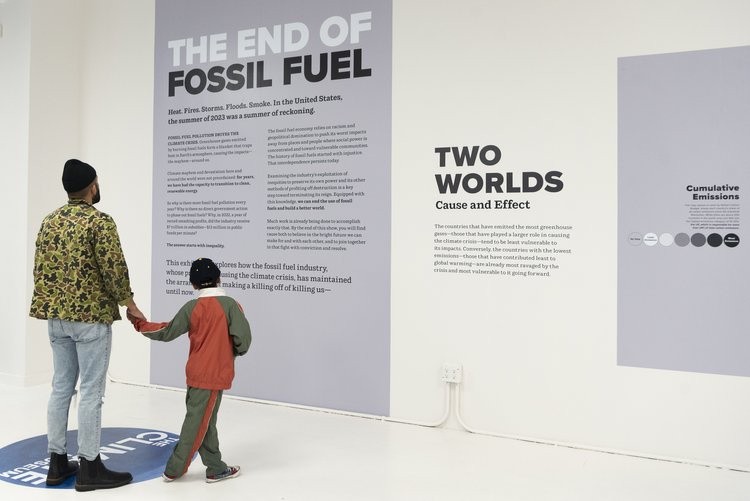New York's only Climate Museum is now calling some of the most famous fashion brands as neighbors in its new pop-up art exhibit in the middle of the famed SoHo neighborhood in the city, "The End of Fossil Fuel."
It will remain open at 105 Wooster Street in the Manhattan neighborhood until April 28, from Wednesdays through Sundays, from 1 PM until 6 PM. Entrance and admission are free.

Climate Advocacy Through the Arts
Museum director Miranda Massey told ABC News that the location is very intentional for the reason that a variety of shoppers from around the world serve as patrons of the many shops of SoHo, increasing the chance that the exhibition might attract "climate-concerned" individuals.
Inside, the exhibition itself begins by offering a stark reminder of the inequality that is inseparable from the issue of climate crisis, especially on the global level. This is shown using a grayscale map boldly stationed right at the entrance of the show.
On one side, visitors will be able to see the world's wealthiest nations, which have also contributed the most when it comes to overall greenhouse gas emissions to the planet as depicted in darker hues.
As the visitors traverse to the other side, another perspective is revealed when examining the installation: a map that showcases countries that are most vulnerable to climate change.
According to Massey, these countries that are most susceptible to the mounting climate issues have contributed "the least to cause the crisis." For the director, it's a matter that we have to solve head-on by way of "climate reparations."
Read also: 'Drawing Places': Thousands Visit Local Artist's Exhibition Celebrating Wolverhampton Scenery
Visualizing 'Climate Justice' using Maps, Colors, and Stickers
Continuing through the exhibit, visitors will be able to see more vivid and gripping utilizations of maps, with one being an interactive geographical guide that shows how redlining actions made nearly a century ago continue to hurt the vulnerable of today.
To add context, redlining is a practice within real estate where housing industry official wrongfully designates an area as "high-risk," with the reasons usually including race.
Past this particular installation is a change in era focus, from the Industrial Revolution to the advent of climate activism, which is symbolized by the introduction of color as is typical at the Climate Museum.
This thematic decision is best represented by a mural that covers up the venue's back wall.
The piece itself was commissioned by the institution from Greg Christie, a children's book artist, which showcases the visual passage of what an economy reliant on fossil fuel will become as it incorporates climate justice.
Waiting at the end of the entire exhibit are stacks of stickers printed with phrases that say: "I will oppose the fossil fuel industry" or "I will talk about climate justice," alongside blank ones that allow visitors to come up with their own empowering words.
Since the exhibition opened last October, the walls opposite the show's entrance where the stickers flock now have thousands of climate-positive messages. Among the cavalcade of viewers, the children are especially excited to write down their wishes and expressions.
"When you let young people know that they have that tremendous capacity to change minds and hearts of people in power, they are galvanized by that," said Massey.